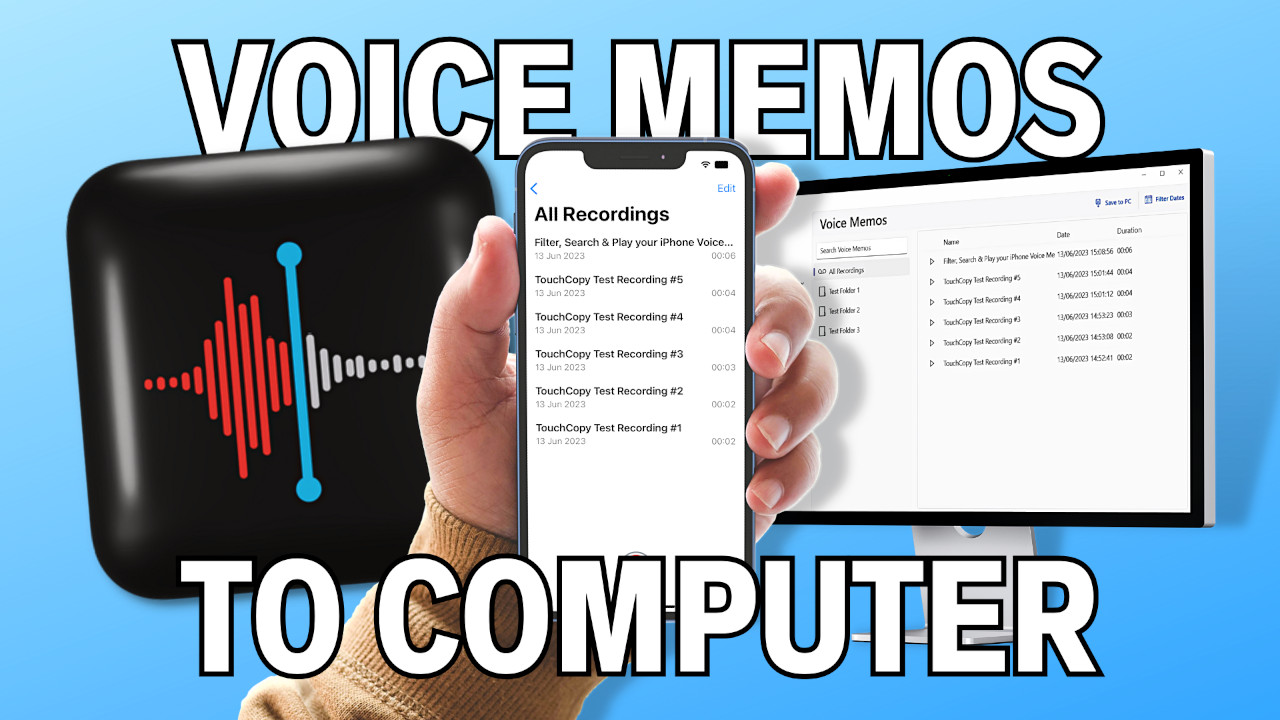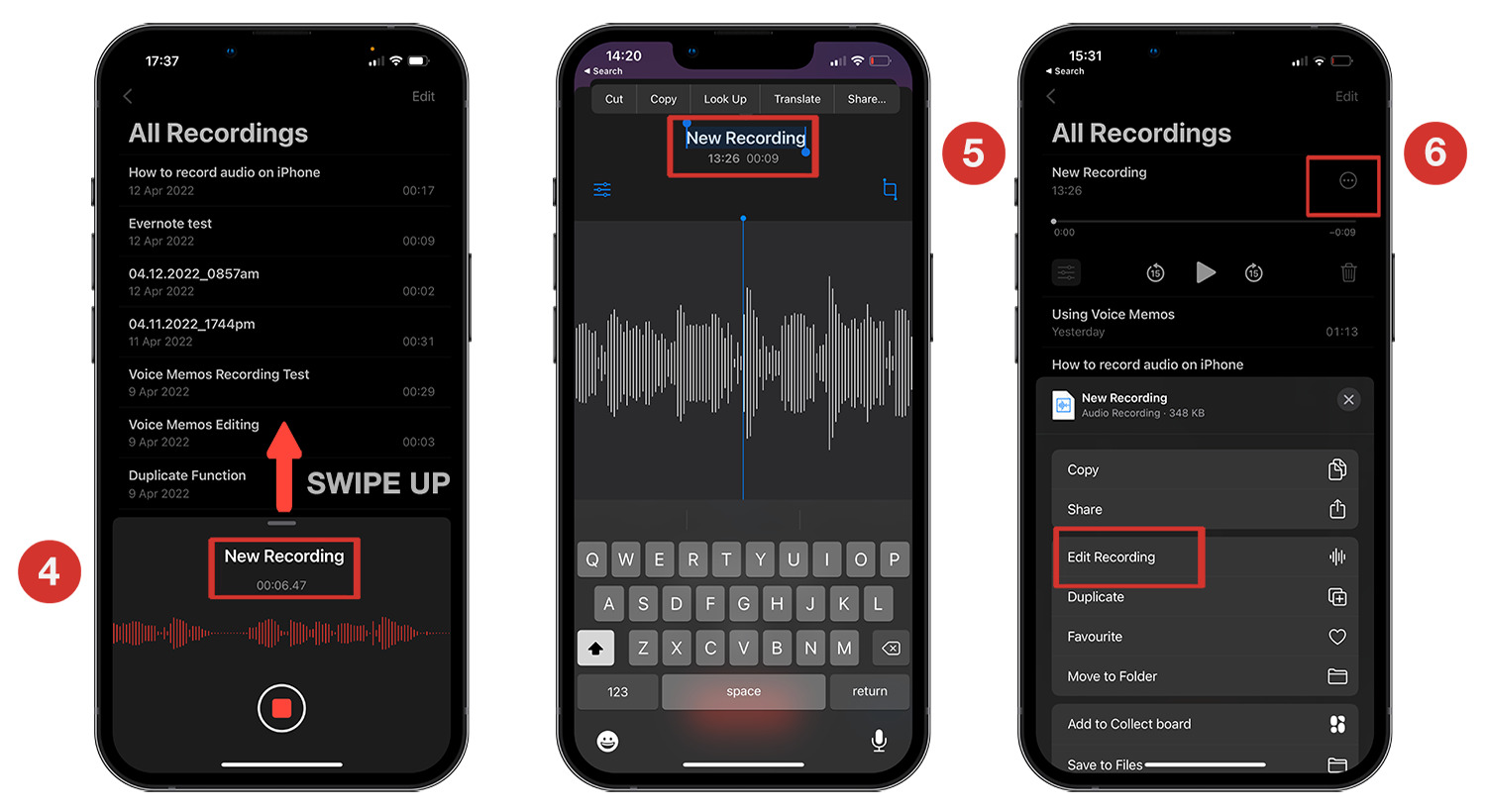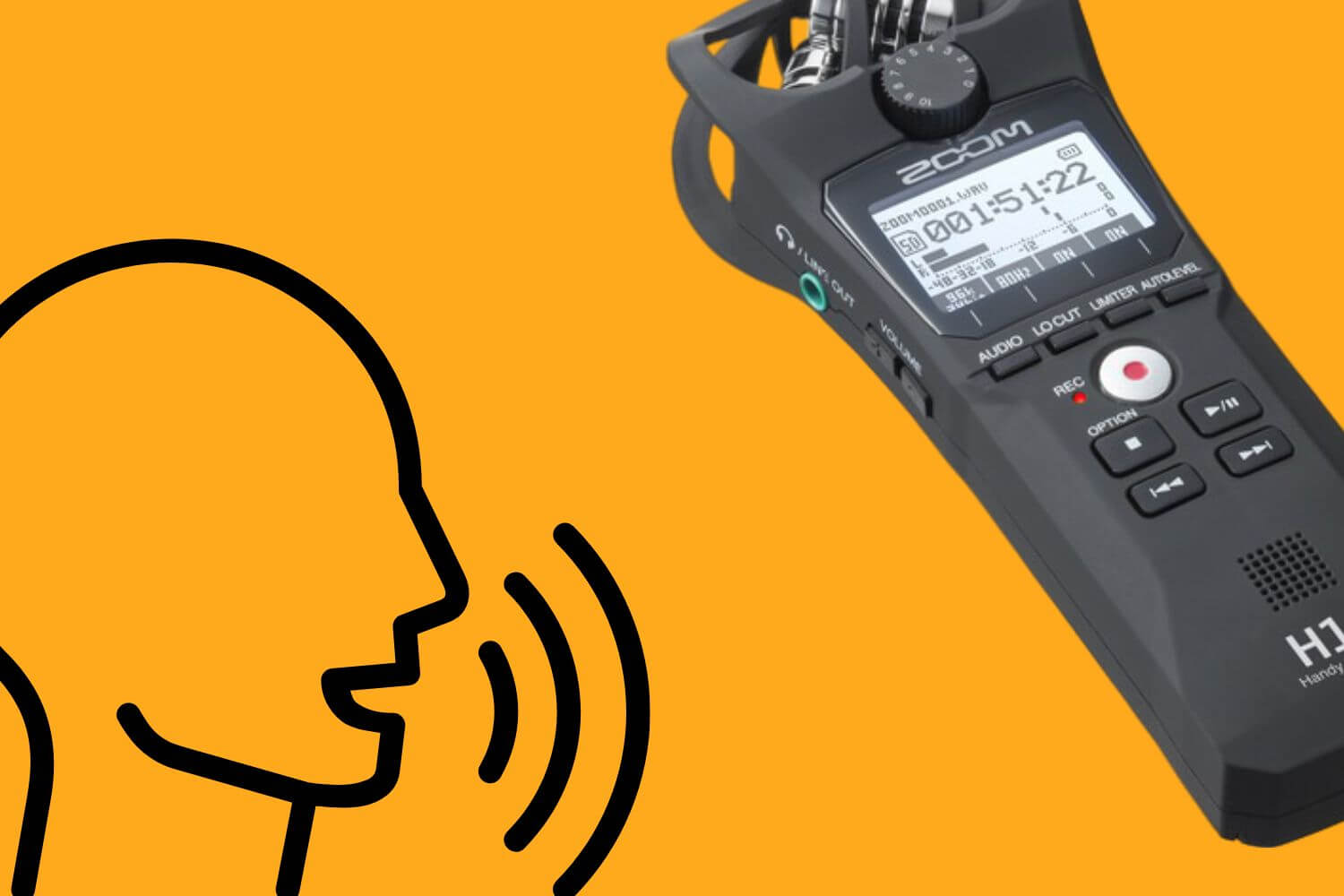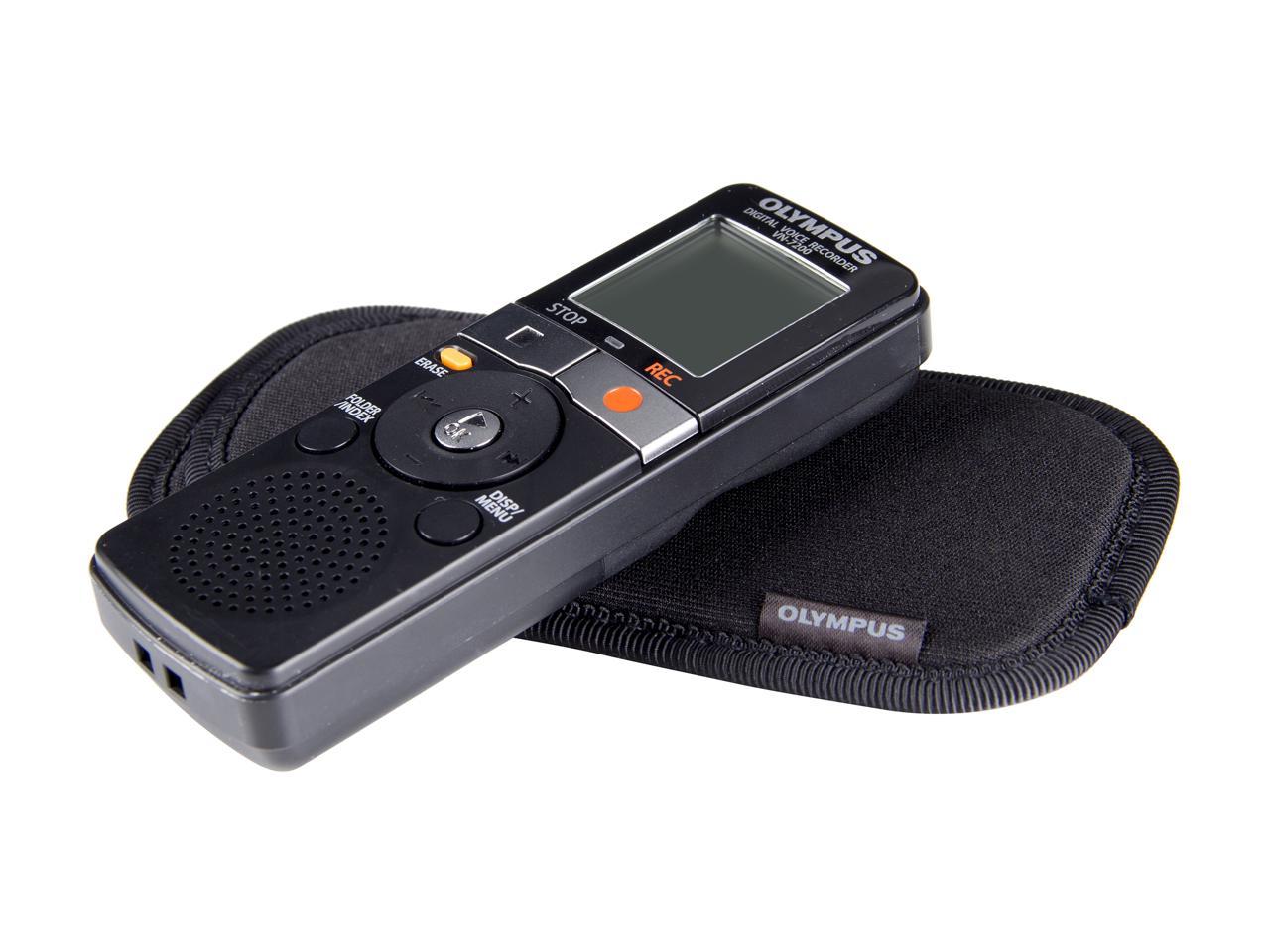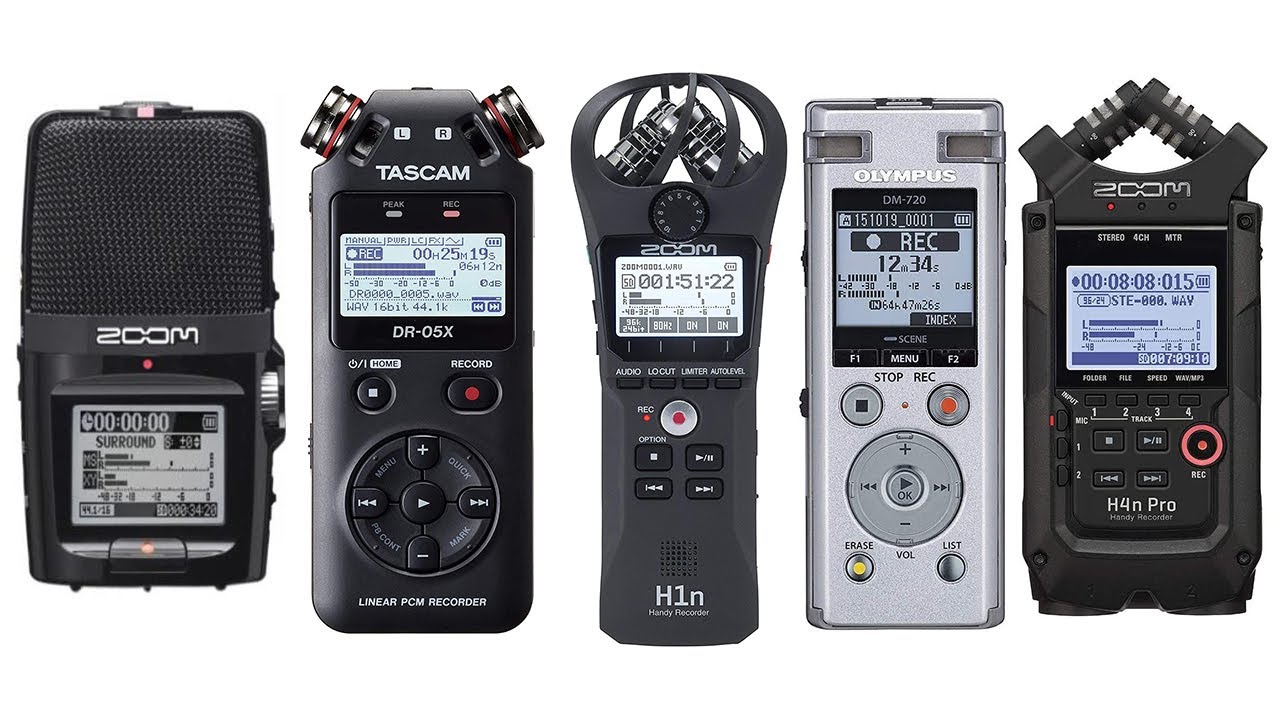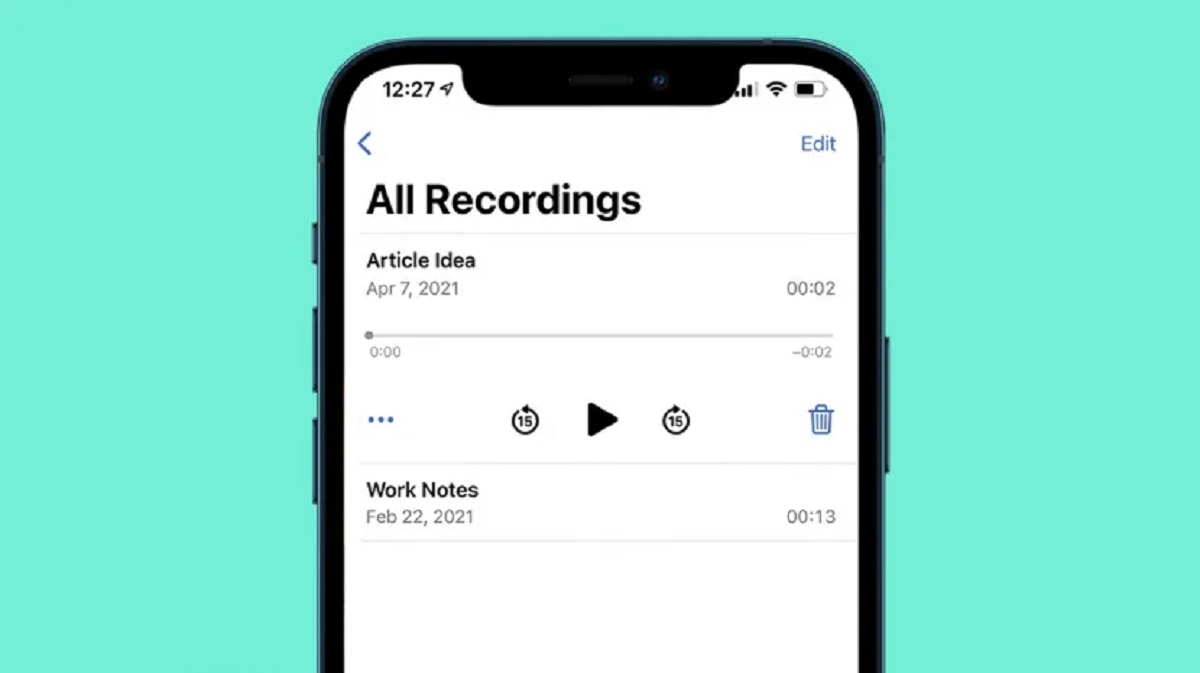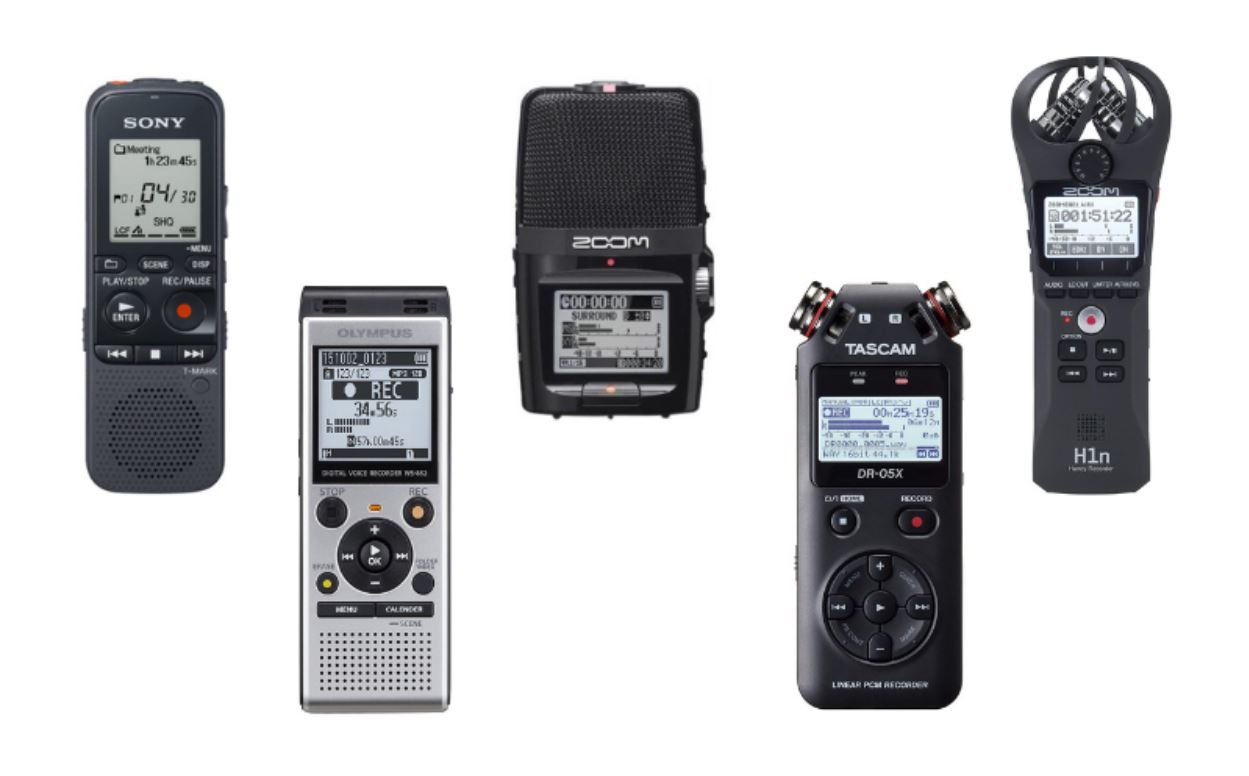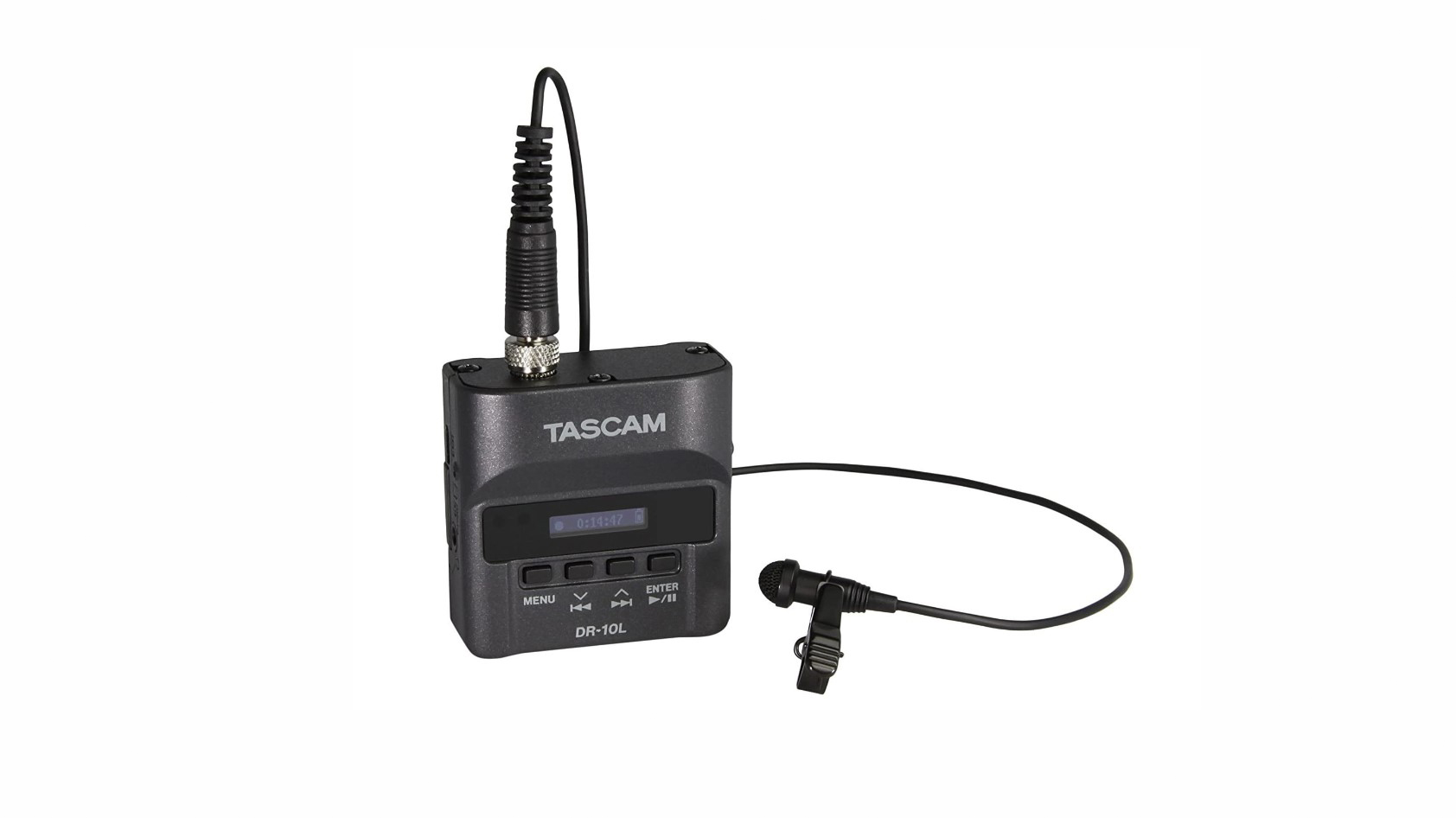Introduction
Welcome to the world of voice recorders! These fantastic devices allow you to capture audio recordings on-the-go, whether it’s for personal or professional purposes. However, once you’ve recorded your voice memos, interviews, or lectures, you might find yourself wondering how to transfer those files from your voice recorder to your computer.
Transferring files from a voice recorder to a computer is essential for various reasons. Firstly, it enables you to backup and archive your recordings in a safe place. In case your voice recorder gets lost or damaged, having a copy on your computer ensures you don’t lose valuable audio data. Additionally, transferring files allows for easy organization and access to your recordings, making it convenient to search for specific files whenever you need them.
In this article, we will explore different methods to transfer files from a voice recorder to a computer, including using a USB cable, transferring wirelessly, and using Bluetooth. We will also discuss how to organize and edit the transferred files on your computer to keep your audio recordings well-managed and easily accessible.
Whether you’re a journalist, student, researcher, or simply someone who enjoys recording voice notes, the following sections will guide you through the process of transferring your recordings to your computer effortlessly. So, let’s dive in and discover how to transfer files from a voice recorder to a computer!
Why You Need to Transfer Files from a Voice Recorder to a Computer
Transferring files from a voice recorder to a computer offers numerous benefits that enhance the usability and accessibility of your recordings. Here are a few key reasons why you should consider transferring your files:
- Backup and Preservation: By transferring your recordings to your computer, you create a backup of your valuable audio files. In case your voice recorder malfunctions, gets lost, or suffers damage, having a copy on your computer ensures that your recordings remain safe and accessible.
- Organization and Management: Transferring files to your computer allows you to organize and manage your recordings more efficiently. With folders and file names of your choice, you can easily locate and access specific recordings whenever you need them.
- Editing and Enhancing: Transferring your recordings to your computer opens up a world of possibilities for editing and enhancing your audio files. Whether you want to remove background noise, adjust volume levels, or add intros and outros, the editing options available on your computer give you greater control over your recordings.
- Sharing and Collaboration: Once your recordings are on your computer, you can easily share them with others or collaborate on projects. Whether it’s sending audio files to colleagues, sharing interview recordings with transcribers, or collaborating with fellow students on research projects, transferring files to your computer enables seamless sharing and collaboration.
- Integration with Other Tools: Transferring your voice recordings to your computer allows you to integrate them with various software and tools. Whether you want to transcribe your recordings using speech-to-text software, analyze them with audio waveform visualizers, or incorporate them into multimedia projects, having your files on your computer provides seamless integration possibilities.
Overall, transferring files from a voice recorder to a computer enhances the security, organization, and versatility of your audio recordings. Whether you’re a professional or a hobbyist, taking the time to transfer your files is a worthwhile investment that ensures your recordings are preserved, easily accessible, and ready for any editing, sharing, or collaborative efforts you may require.
Connecting your Voice Recorder to a Computer
Before you can transfer files from your voice recorder to your computer, you need to establish a physical connection between the two devices. The method of connection varies depending on the type of voice recorder you have. Here are the most common methods:
USB Cable:
The most straightforward and commonly used method is connecting your voice recorder to your computer using a USB cable. Most voice recorders come with a USB port that allows for easy data transfer. Simply plug one end of the USB cable into the voice recorder and the other end into an available USB port on your computer. Once connected, your computer will recognize the voice recorder as a removable storage device, allowing you to access and transfer the files.
Wireless Connection:
Some modern voice recorders offer wireless connectivity options, such as Wi-Fi or Bluetooth. With these devices, you can connect to your computer wirelessly and transfer files without the need for a physical USB cable. To establish a wireless connection, ensure that both your voice recorder and computer are connected to the same Wi-Fi network or synced via Bluetooth. Follow the manufacturer’s instructions on how to initiate the connection and transfer files wirelessly.
Bluetooth:
If your voice recorder has Bluetooth capability, you can connect it to your computer using Bluetooth technology. Enable Bluetooth on both devices, and make them discoverable. Pair your voice recorder with your computer following the manufacturer’s instructions. Once paired, you can easily transfer files between the two devices wirelessly.
It’s crucial to consult the instruction manual or manufacturer’s website for your specific voice recorder model to determine the exact method and steps required to establish a connection with your computer. Each voice recorder may have unique features and requirements, so following the manufacturer’s guidelines will ensure a successful connection.
Once you’ve established a connection, you are ready to transfer files from your voice recorder to your computer. The following sections will explore different methods to transfer files using a USB cable, wireless connection, and Bluetooth, as well as how to organize and edit the transferred files on your computer.
Transferring Files using USB Cable
Using a USB cable is the most common and straightforward method for transferring files from your voice recorder to your computer. Here’s a step-by-step guide on how to do it:
- Begin by connecting one end of the USB cable to the USB port on your voice recorder.
- Next, connect the other end of the USB cable to an available USB port on your computer.
- Once connected, your computer should recognize the voice recorder as a removable storage device.
- Open the file explorer or Finder on your computer to access the voice recorder.
- Navigate to the folder or location on your voice recorder where the files are stored.
- Select the files you wish to transfer by either dragging and dropping them to a desired location on your computer or using the copy and paste command.
- Wait for the file transfer process to complete. The speed of the transfer will depend on the size of the files and the connection speed.
- Once the transfer is complete, safely eject the voice recorder from your computer to avoid data corruption or loss.
It’s important to note that the folder structure and organization of files on your voice recorder may vary depending on the device. Some voice recorders create separate folders for different types of recordings, while others store all files in a single location. Take the time to navigate through your voice recorder and locate the specific files you wish to transfer.
If prompted, you may also need to install drivers or software provided by the manufacturer to ensure compatibility between your voice recorder and computer. These installation steps will be outlined in the instruction manual or on the manufacturer’s website.
Transferring files using a USB cable is a reliable and secure method. It allows for faster data transfer compared to wireless methods, especially when dealing with large files or multiple recordings at once. Once the files are on your computer, you can easily organize, edit, and share them as desired.
Now that you know how to transfer files using a USB cable, let’s explore other methods such as transferring files wirelessly and using Bluetooth.
Transferring Files wirelessly
For those who prefer a wireless solution, transferring files from your voice recorder to your computer can be done without the need for a physical connection. Here are a few methods for transferring files wirelessly:
Wi-Fi Connectivity:
Some voice recorders come with built-in Wi-Fi capabilities that allow you to connect and transfer files wirelessly. To use this method, ensure that both your voice recorder and computer are connected to the same Wi-Fi network. Consult the user manual or manufacturer’s instructions to enable Wi-Fi on your voice recorder and configure the necessary settings. Once connected, you can access the voice recorder’s interface or use dedicated software provided by the manufacturer to initiate the file transfer. Follow the on-screen instructions to select the files you want to transfer and initiate the transfer process.
Manufacturer’s Software:
Manufacturers often provide dedicated software for their voice recorders. This software allows you to connect your voice recorder to your computer wirelessly and transfer files. Install the software on your computer and follow the manufacturer’s instructions to connect your voice recorder using the software. Once connected, you can select and transfer the desired files wirelessly.
Cloud Storage Services:
Another option for wireless file transfer is to utilize cloud storage services such as Dropbox, Google Drive, or OneDrive. These services allow you to upload your recordings from your voice recorder to the cloud using a Wi-Fi or internet connection. Once uploaded, you can access the files from your computer by logging into the respective cloud storage account. Simply download the files from the cloud storage to your computer, and you’re good to go.
It’s important to note that the availability of these wireless transfer methods may vary depending on the model and brand of your voice recorder. Some devices may offer both Wi-Fi connectivity and dedicated software options, while others may provide only one method. Consult the user manual or manufacturer’s website for specific instructions on how to enable and use wireless transfer capabilities.
Transferring files wirelessly provides convenience and flexibility, especially for those who want to avoid using cables or prefer to transfer files without direct physical connections. However, it’s essential to ensure a stable and secure network connection to avoid any interruptions or data loss during the transfer process.
Now that you’re familiar with wireless file transfer methods, let’s explore another option: transferring files using Bluetooth.
Transferring Files using Bluetooth
If your voice recorder supports Bluetooth connectivity, you can transfer files wirelessly between your voice recorder and computer. Here’s how to transfer files using Bluetooth:
Pairing Devices:
First, ensure that Bluetooth is enabled on both your voice recorder and computer. Make sure they are within a reasonable range for a stable connection. On your computer, go to the Bluetooth settings and search for available devices. Select your voice recorder from the list of available devices. The devices will then prompt you to confirm the pairing process.
Sending Files:
Once the devices are paired, you can initiate the file transfer process. Open the file browser on your computer and navigate to the location where you want to save the transferred files. On your voice recorder, select the files you wish to transfer. Look for the option to “Send” or “Share” the selected files via Bluetooth. Choose your computer as the destination device from the list of available devices. The transfer process will begin, and the files will be sent via Bluetooth to your computer.
Receiving Files:
On your computer, a prompt will appear asking you to accept the incoming file from your voice recorder. Confirm the transfer to accept the file. The file will be saved in the designated location on your computer. Once the transfer is complete, you can disconnect the devices or keep them paired for future transfers.
It’s worth noting that the speed of Bluetooth file transfer is generally slower compared to a USB cable or Wi-Fi transfer. This is due to limitations in Bluetooth technology. However, Bluetooth offers convenience and flexibility, especially if you prefer not to use cables or don’t have access to Wi-Fi.
Remember, not all voice recorders have Bluetooth capabilities, so it’s important to check the specifications or user manual of your device to determine if Bluetooth transfer is available.
Now that you know how to transfer files using Bluetooth, you’re ready to explore how to organize and edit the transferred files on your computer.
Organizing Transferred Files on your Computer
Once you have successfully transferred files from your voice recorder to your computer, it’s important to organize them in a way that makes it easy to find and access specific recordings. Here are some tips for organizing your transferred files:
Create Folders:
Consider creating separate folders for different types of recordings or categories. For example, you could have folders named “Interviews,” “Lectures,” “Personal Memos,” or any other relevant categories to suit your needs. This allows for better organization and easy navigation when you’re searching for specific files.
Use Descriptive File Names:
When saving your transferred files, use descriptive and meaningful file names. Include details such as date, time, or event name in the file names to provide context and make it easier to identify the content of each recording. Avoid generic names like “Audio001” as they can become confusing over time.
Sort and Arrange:
Sort your recordings in chronological or alphabetical order within each folder to further facilitate easy access. This ensures that the most recent or relevant files are readily available at the top of the list.
Add Metadata:
Consider adding metadata to your recordings, such as tags or keywords, to help with searchability. This can be useful when you have a large number of recordings and want to quickly find specific files related to a particular topic or keyword. Additionally, you can utilize software or media players that allow you to add metadata to your recordings for more detailed organization.
Backup and Archive:
Regularly back up your organized files to an external storage device or cloud storage to prevent data loss. This ensures that even if something happens to your computer, you still have copies of your recordings. Archiving old or less frequently accessed recordings helps free up space on your computer’s storage and keeps your active files well-organized.
By implementing these organizing techniques, you can ensure that your transferred files are well-managed and easily accessible. Whether you need to quickly locate an important interview or review past lecture recordings, having an organized system will save you time and effort.
Now that you have organized your transferred files, let’s explore how to edit them on your computer.
Editing Transferred Files
Once you have transferred your voice recordings to your computer, you have the flexibility to edit and enhance them to suit your needs. Whether you want to remove background noise, adjust volume levels, or add introductory or closing statements, editing your transferred files can greatly improve the quality and usability of your recordings. Here are some tips for editing your transferred files:
Choose the Right Software:
Use audio editing software that suits your needs and skill level. There are various options available, ranging from beginner-friendly software with basic editing features to professional-grade software with advanced capabilities. Some popular options include Audacity (free and open-source), Adobe Audition, and GarageBand (for Mac users). Explore different software options to find the one that best fits your requirements.
Import the File:
Most audio editing software allows you to import audio files by either dragging and dropping them into the software’s workspace or using the “Import” option in the software’s menu. Navigate to the location where your transferred files are saved on your computer and select the file you want to edit.
Edit and Enhance:
Once the file is imported, you can perform various editing tasks. Some common editing options include cutting and trimming sections, adjusting volume levels, equalizing the audio, applying noise reduction, and adding effects or filters. Familiarize yourself with the software’s features and experiment with different techniques to achieve the desired result.
Save the Edited File:
Once you’re satisfied with the edits, save the file in a format that suits your needs. Common audio formats include MP3, WAV, and FLAC. Consider the intended use of the edited file when choosing the format, as different formats have varying file sizes and compatibility with different devices or platforms.
Keep a Backup:
It’s always a good practice to keep a backup of the original unedited file before making any changes. This allows you to revert back to the original recording if needed or make additional edits later on without losing the original file.
Editing your transferred files gives you the opportunity to refine and enhance the quality of your recordings. Whether you’re editing interviews, lectures, or personal memos, the ability to tweak and customize your recordings opens up a world of possibilities.
With your transferred files now edited and customized to your preference, you’re ready to use your recordings for various purposes, such as sharing, transcribing, or incorporating them into multimedia projects.
Conclusion
Transferring files from a voice recorder to a computer is a necessary step to ensure the security, organization, and accessibility of your audio recordings. Whether you’re using a USB cable, wireless connection, or Bluetooth, each method offers its own advantages and flexibility for transferring files.
Once the files are transferred to your computer, it’s important to organize them effectively, using folders, descriptive file names, and metadata. This ensures easy navigation and quick access to specific recordings when needed.
Editing your transferred files opens up a world of possibilities for enhancing the quality and usability of your recordings. Whether it’s removing background noise, adjusting volume levels, or adding effects, audio editing software gives you the power to customize your recordings to suit your needs.
Remember to always keep backups of your original recordings before making any edits. This ensures that you can revert back to the original file if needed and allows for future edits without losing the original data.
By mastering the techniques of transferring, organizing, and editing your voice recorder files, you can elevate the effectiveness and utility of your valuable audio recordings. Whether you’re a journalist, student, researcher, or someone who enjoys capturing voice notes, these skills will help you make the most of your voice recorder and computer combination.
So, dive into the world of transferring, organizing, and editing your voice recorder files, and unlock the full potential of your audio recordings!







